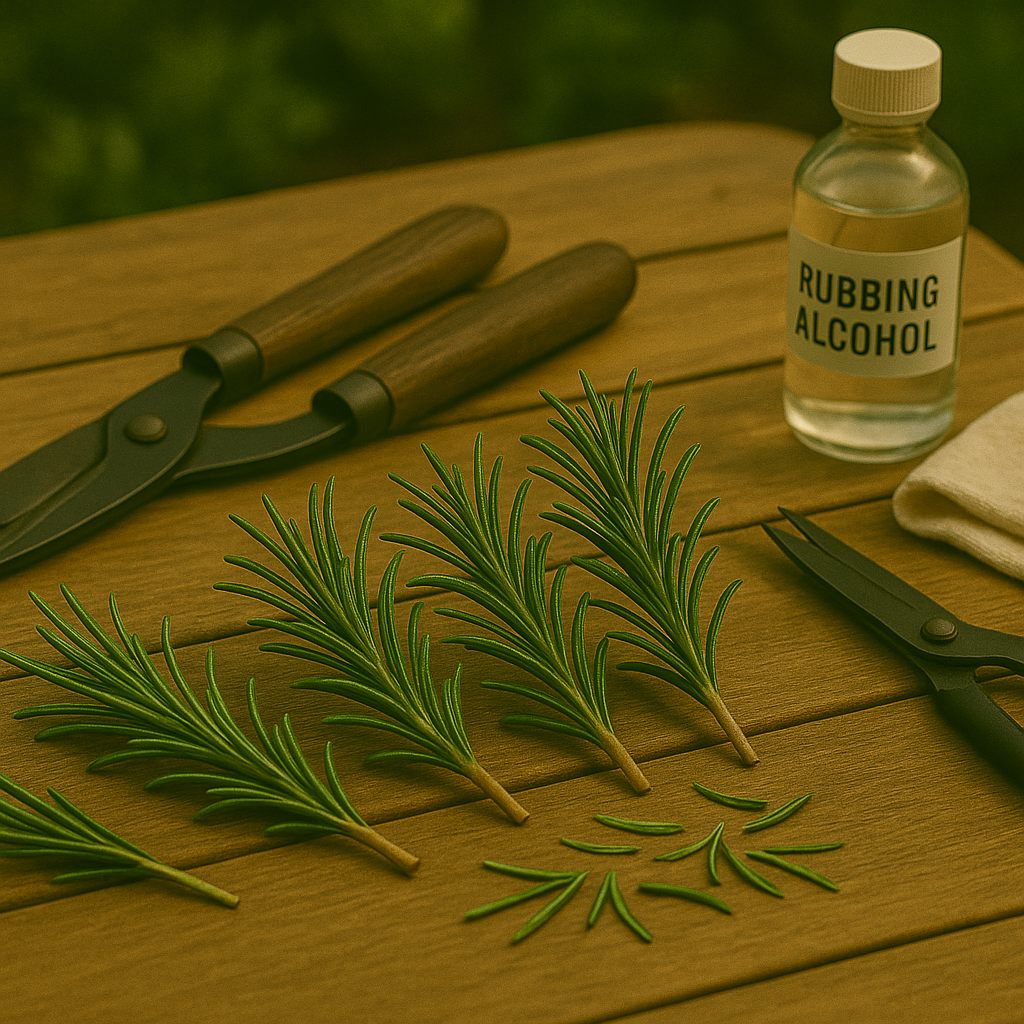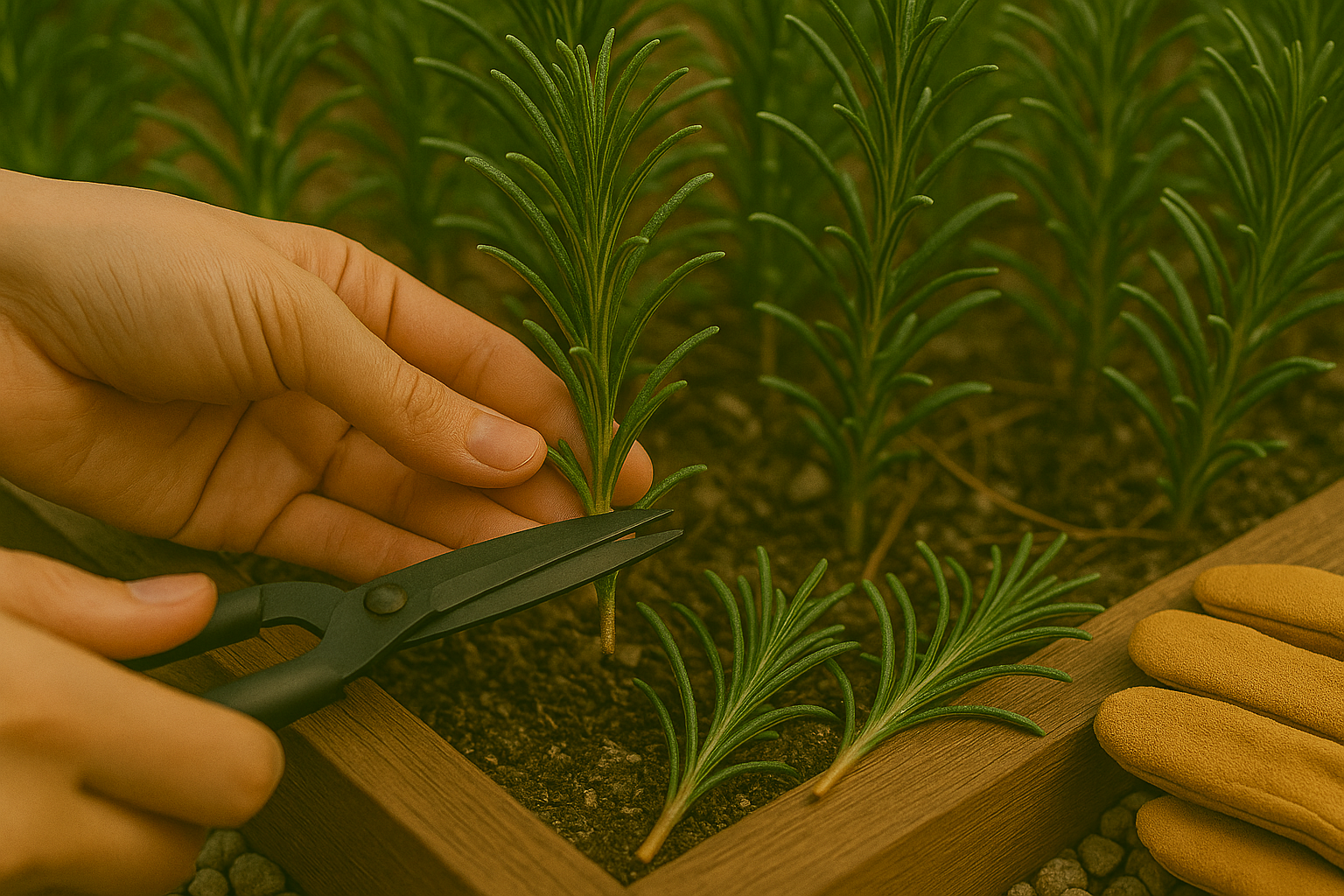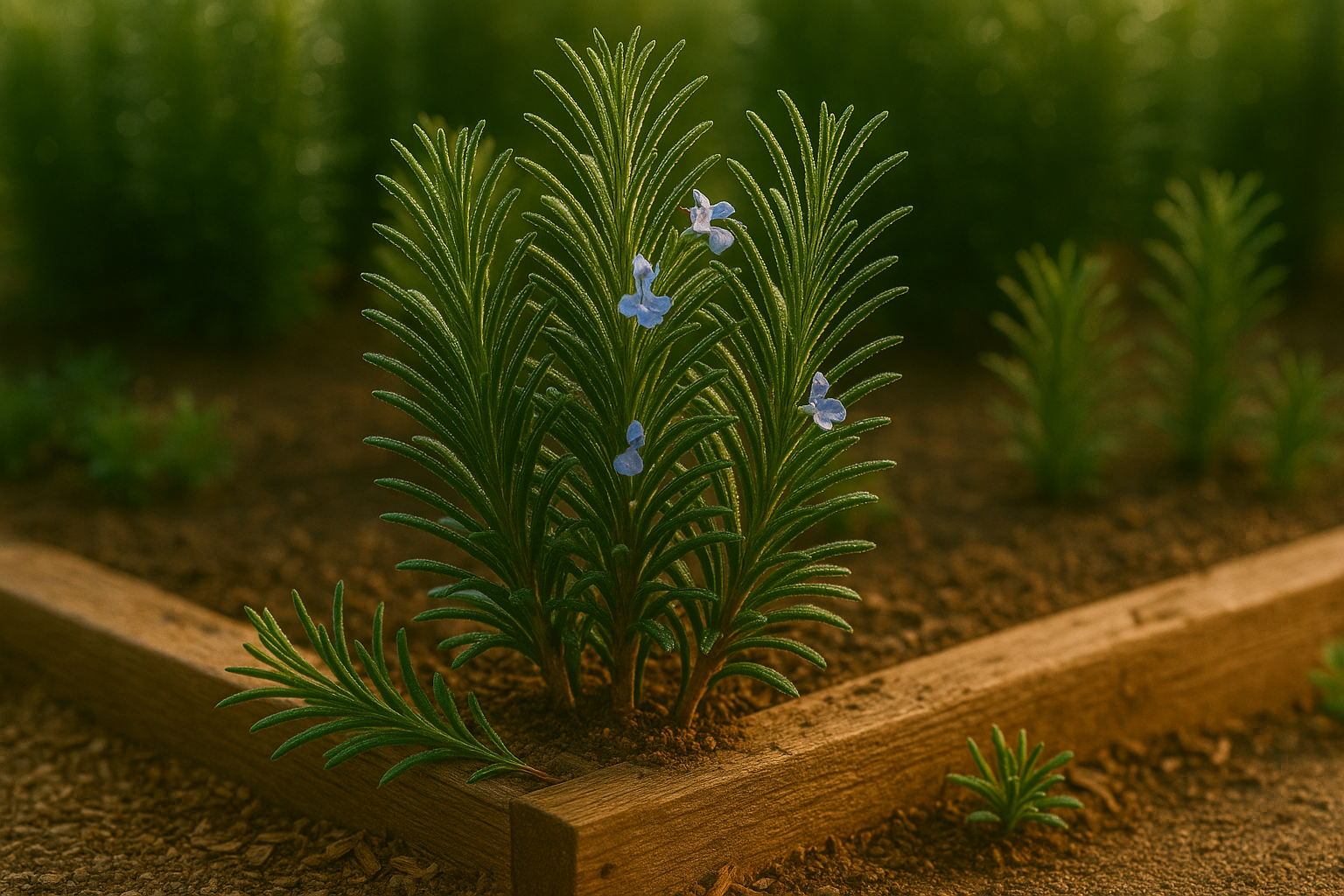Understanding Rosemary Growth and Harvest Timing
Rosemary, a hardy perennial, follows a predictable growth cycle that helps you pinpoint the perfect time to harvest for both flavor and plant health. In spring, as temperatures rise and daylight increases, rosemary enters a vigorous growth phase, producing tender, aromatic new shoots. This active period usually continues through early summer, making late spring to early summer the ideal window for most harvesting.
For the best results, look for healthy rosemary stems about 6 inches long with plenty of soft, bright green new growth. Mature plants—those at least a year old and over a foot tall—can handle more frequent harvesting, while younger bushes benefit from minimal trimming.
Flowering is another telltale sign. If you see small, pale blue flowers beginning to appear, your rosemary is mature and at peak oil content—perfect for culinary use, though the flavor may subtly shift as the plant puts energy into blooming.
Seasonal factors are crucial:
- Harvest just before flowering or early in the morning, when oils are most concentrated, to get the most potent flavor.
- Avoid heavy cutting in late fall or winter since the plant slows down and needs energy reserves to survive cold conditions. Improper late-season harvests can stress your rosemary or stunt spring regrowth.
Always use sharp, clean shears to snip sprigs, leave plenty of older growth intact, and never remove more than one-third of the plant at once to encourage healthy regrowth.
By syncing your harvest with rosemary’s natural rhythm and watching for signs like lush new tips or a flush of tiny blooms, you’ll collect the most flavorful stems while keeping your plant robust for seasons to come.
Tools and Preparation for Harvesting Rosemary

Before you head out to harvest your rosemary, having the right tools makes all the difference. The essentials are simple: a pair of sharp scissors or garden pruners and a comfortable set of gardening gloves.
Scissors work well for tender green stems, but for mature, woody branches, sturdy pruners offer better leverage and cleaner cuts. Gloves protect your hands not just from rough stems, but also from the sticky oils rosemary can leave behind.
To prevent spreading plant diseases, always start by cleaning your tools thoroughly with rubbing alcohol or a diluted bleach solution—this helps kill off any lingering bacteria or fungal spores from previous gardening. Sharpen your blades before each harvest; dull tools crush stems instead of slicing cleanly, leaving your rosemary vulnerable to damage and infection.
Safety is equally important. Handle woody branches carefully to avoid slipping—use two hands if necessary, one to hold the stem steady and the other to snip. Make your cuts just above a leaf node to encourage bushier regrowth, and avoid removing more than a third of the plant at once, as over-harvesting can stress your rosemary and stunt its productivity.
By taking these simple precautions, you’ll enjoy a bountiful, healthy harvest season after season.
Step-by-Step Guide to Harvesting Rosemary Without Harm

Harvesting rosemary the right way ensures your plant keeps thriving season after season. To begin, always choose healthy, green stems for cutting—avoid any that look woody or dried out, as these don’t regenerate as vigorously.
Use clean, sharp scissors or pruning shears to make a neat cut just above a leaf node (the spot where leaves branch off the main stem). It’s best to avoid cutting into the older, woody stems close to the base, as these areas don’t grow back well and can weaken your plant’s structure.
When deciding how much to harvest, never remove more than one-third of the plant at any one time; this keeps stress low and encourages new, leafy shoots to develop. Gently hold the stem with one hand while you snip with the other, and try not to pull or tug, which can damage remaining branches.
After harvesting, give the plant a quick look over and remove any dead or yellowing leaves. For continual healthy regrowth, harvest rosemary lightly every few weeks during spring and summer—the main growing season—rather than taking large amounts all at once.
This steady, gentle approach not only fills your kitchen with fresh rosemary but also keeps your plant compact and flourishing all year round. Remember, patience and care go a long way—well-timed, mindful harvesting is your best bet for a lush and productive rosemary bush.
Post-Harvest Rosemary Care
Right after harvesting rosemary, it’s important to give your plants some extra care to help them recover and bounce back strong. Start by watering thoroughly, but avoid soaking the soil—rosemary prefers its roots on the drier side to prevent root rot, so aim for consistent, light moisture.
A light application of a balanced, diluted liquid fertilizer can help replenish nutrients, but avoid heavy feeding as it may stress the plant. To encourage bushy new growth, trim lightly around the cuts, being careful not to remove too much foliage at once.
Regularly pinch the tips of new shoots to stimulate branching rather than tall, leggy growth. Good air circulation is also key, so space plants well and prune away any crowded stems.
Watch for post-harvest trouble signs like wilting, yellowing, or browning leaves—these can indicate overwatering, poor drainage, or fungal disease. If you spot wilting, check the soil moisture and ease up on watering. For yellow or brown patches, cut away affected leaves and check for pests or mold at the base.
Always use clean, sharp shears to prevent spreading bacteria, and consider mulching lightly to keep roots healthy without trapping too much moisture. With these steps, your rosemary should reward you with fresh, fragrant regrowth ready for your next harvest.
Storing and Using Fresh Rosemary
Keeping fresh rosemary vibrant is simple with a few smart storage tricks. Store rosemary sprigs upright in a glass of water on the counter, just like cut flowers—change the water every couple of days and cover loosely with a plastic bag to prevent wilting.
For longer fridge life, wrap the sprigs in a slightly damp paper towel and seal them in an airtight bag; this keeps them fragrant for up to two weeks.
When it comes to using rosemary, it’s incredibly versatile: chop the needles for roasted potatoes or vegetables, add whole sprigs to stews and soups, or infuse olive oil for a gourmet touch.
Beyond the kitchen, toss rosemary into hot bathwater for soothing aromatherapy, or tie sprigs together for fragrant drawer sachets that repel moths.
If you have an abundant supply, consider drying rosemary by air or oven—simply hang it in bundles or spread the sprigs on a baking sheet at low heat until crisp—then store in a jar for months of easy seasoning.
Alternatively, freeze whole sprigs or chopped rosemary in ice cube trays with a splash of water or oil for convenient use.
For detailed step-by-step guides on drying and freezing rosemary, check out reliable cooking resources online to make the most of your herb harvest.
Troubleshooting & FAQs on Harvesting Rosemary
When it comes to harvesting rosemary, many gardeners wonder how often they should snip their plants. Ideally, you can harvest small amounts of rosemary throughout the growing season, but avoid cutting more than one-third of the plant at a time—this allows the shrub to keep growing strong.
Rosemary actually benefits from regular, light harvesting, as this encourages bushier, healthier growth. If your plant looks sparse after a harvest, don’t panic. Rosemary is resilient and will regrow, especially if you water and feed it regularly.
Sometimes, improper pruning—like cutting into the woody, leafless stems—can slow regrowth or cause dieback. To avoid this, always trim above a leaf node or where you see green growth.
If you notice yellowing or droopy leaves after harvesting, it could be a sign you’ve taken too much or the plant needs more water and sunlight. Give it a little TLC by:
- Reducing harvest frequency
- Watering when the top inch of soil is dry
- Ensuring good air circulation
If you make a pruning error, don’t overcompensate by cutting more; instead, let the plant recover naturally. You should see new shoots within a few weeks. Regular, careful harvesting will keep your rosemary thriving year-round.
